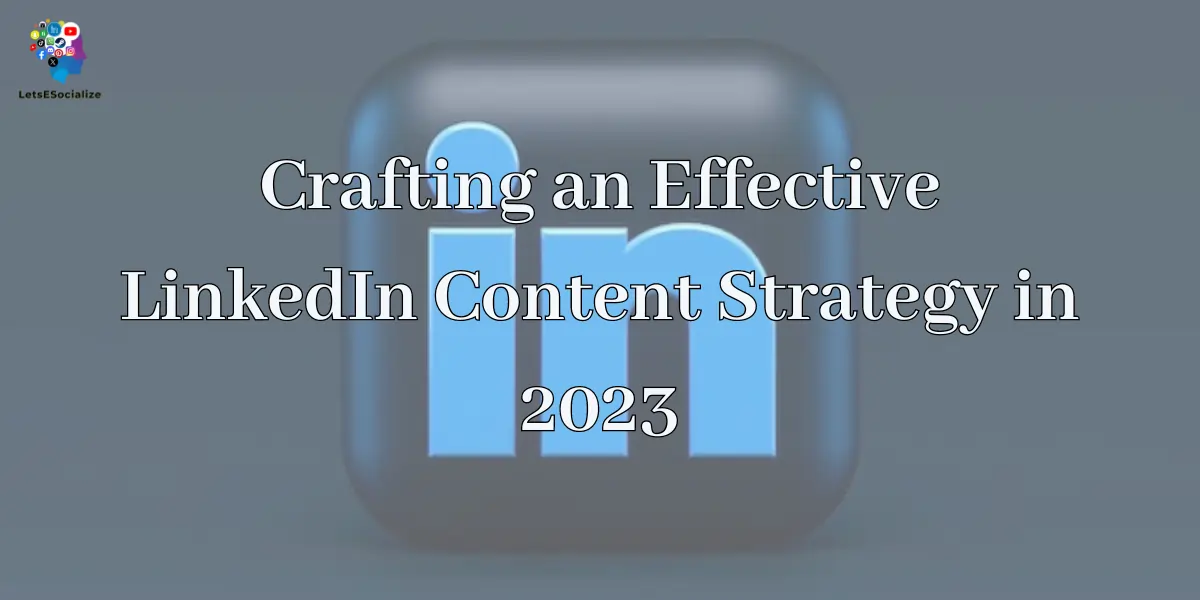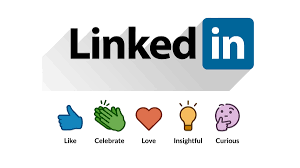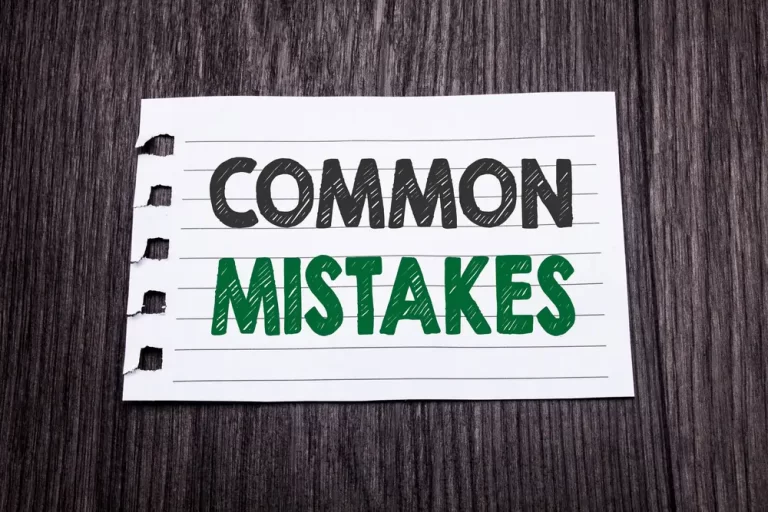Developing a strategic approach to content is crucial for brands seeking to maximize LinkedIn’s marketing potential.
With over 830 million members, LinkedIn offers immense opportunities to engage professional audiences—but only if your content strikes the right chord.
Table of Contents
What is a LinkedIn Content Strategy?
A LinkedIn content strategy is a planned, coordinated approach for creating and distributing content optimized for consumption and engagement on LinkedIn platforms.
It involves defining:
- Target audiences
- Content mix and formats
- Cadence and output
- Distribution methods
- Engagement approaches
- Success metrics
With a documented strategy, brands publish LinkedIn content that systematically attracts followers, shares, leads, and engagement from ideal buyer profiles.
Also Read – LinkedIn For Accounting Professionals
Why You Need a LinkedIn Content Strategy
Too often, brands create LinkedIn content randomly without grounding it in strategy. But a thoughtful strategy delivers powerful advantages:
- Attracts ideal audiences – A strategic content plan ensures you engage the audiences that matter most to your business.
- Drives brand consistency – Content aligns tightly with positioning and messaging when strategically conceived.
- Enables collaboration – A documented plan allows various creators and approvers to work together cohesively.
- Allocates resources – You can plan budgets, assign owners, and schedule more effectively.
- Maximizes impact – Analytics reveal what content resonates so you can refine the strategy accordingly.
- Saves time – Content process and performance improve with a defined approach.
In summary, LinkedIn content gains purpose, consistency, efficiency, and impact when executed strategically.
Elements of a LinkedIn Content Strategy

An impactful content strategy addresses these core elements:
Goals
What business or awareness outcomes do you want your content to drive on LinkedIn? Common goals include:
- Increase followers
- Generate leads
- Boost engagement
- Educate about products
- Recruit new employees
- Support sales
Audiences
Who are the target buyer personas, professional roles, and segments you aim to reach on LinkedIn? Be as specific as possible in defining ideal audiences.
Content Pillars
What recurring themes will your content align around? Examples could include:
- Industry trends
- Product Capabilities
- Leadership insights
- Case studies
- Company culture
Content Types
What mix of content formats and styles will you leverage? Consider:
- Long-form posts
- Short trips
- Research reports
- Videos
- Stories
- AMAs
- Live video
- Images
- Q&As
Cadence
How frequently will you publish and promote content? Maintain a consistent cadence like 2x a week or daily.
Distribution
What platforms will you leverage beyond the LinkedIn feed? Options include:
- LinkedIn Company Page
- LinkedIn Groups
- LinkedIn ads
- Employee profiles
Engagement
How will you interact with your audience and respond to content? Tactics could involve:
- Liking and commenting on follower posts
- Responding to all comments on your content
- Asking questions to spark discussions
- Sharing user-generated content
Analytics
What metrics will you track to gauge content performance? KPIs might include:
- Follower growth
- Engagement rate
- Impressions
- Lead generation
- Shares/comments
- Follower demographics
Team Workflow
Document what team members handle content creation, approval workflows, posting, engagement monitoring, and optimization.
Outline each element clearly in a plan to guide consistent, effective content that moves metrics.
How to Create a LinkedIn Content Strategy
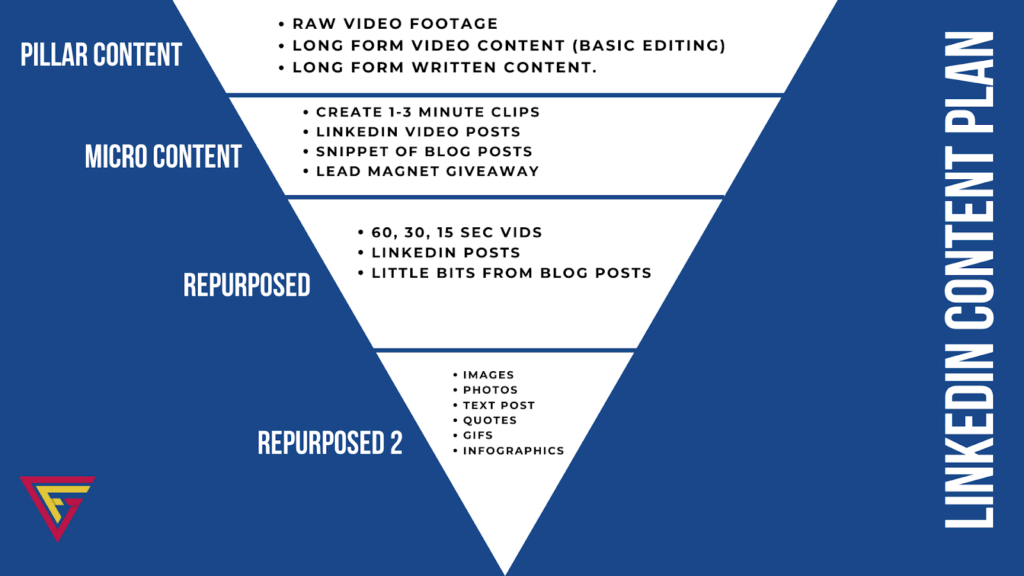
Follow these steps to develop a high-impact LinkedIn content strategy:
- Define your objectives – Outline specific, measurable goals you want LinkedIn content to achieve.
- Clarify target audiences – Build detailed buyer personas that identify who you seek to engage.
- Audit existing content – Review what content already exists and its performance. Identify gaps.
- Establish content pillars – Determine 3-5 overarching themes to ground content.
- Map content types to stages – Identify what formats align with awareness, consideration, and decision stages.
- Set content frequency and cadence – Determine output volume and publishing schedule.
- Outline distribution plan – Map where and how you will syndicate and share content.
- Document workflows – Detail who handles creation, approval, posting, engagement, and optimization.
- Select success metrics – Determine KPIs that indicate content effectiveness at driving goals.
- Monitor and refine – Analyze performance trends to continuously improve the strategy.
Revisit this comprehensive strategy every quarter to ensure it evolves with audience interests, company priorities, and platform best practices.
Also Read – Unlocking LinkedIn Skill Badges: The Complete Guide
LinkedIn Content Strategy Templates
Developing thorough content strategies can feel overwhelming. That’s why using templates as guides is so valuable.
Here are free, customizable LinkedIn content strategy templates to accelerate your planning:
HubSpot LinkedIn Content Strategy Template
Social Media Examiner LinkedIn Editorial Planner
These templates, checklists, and spreadsheets provide guiding frameworks to ease strategy creation, saving time and effort.
LinkedIn Content Ideas That Generate Engagement

Brainstorming fresh LinkedIn content ideas aligned with your strategy can prove challenging.
Consider these engaging formats:
- Industry analysis – Trends reports, forecasting, and projections based on data
- Pro tips – Tactical how-to’s, best practices, insights, skill-building
- Behind the scenes – Photos, videos, stories highlighting company culture
- Expert Q&As – Interviews with thought leaders, executives and partners
- Research findings – Sharing proprietary survey and study results
- Reaction commentary – Responding to current events, news, studies
- A Day in the Life features – Profile employees across departments
- Ask Me Anything (AMA) sessions – Executives answer audience questions live
- Roundup posts – Curating top content on relevant topics
- Origin stories – Company founding myths, pivotal milestone tales
- Reddit AMA excerpts – Transcripts and quotes from executive Reddit AMAs
- Customer success stories – Case studies, testimonials, interviews
Mix evergreen and timely content across these engaging formats aligned to audience interests. Consider repurposing content from other channels too.
LinkedIn Content Distribution Strategies
To maximize reach, extend your LinkedIn content strategy across multiple platforms:
- Company Page – The hub for your brand content. Post content consistently.
- Showcase Pages – Create dedicated pages on specific topics to share related content.
- Employee profiles – Encourage workers to share company posts.
- LinkedIn Groups – Join and post in industry and role-specific groups.
- Sponsored Content – Sponsor key posts to reach expanded audiences.
- LinkedIn Live – Stream video discussions and Q&As.
- Website – Embed LinkedIn posts and videos to enable sharing.
- Email – Promote and link to content in signature lines and newsletters.
- Social channels – Cross-promote relevant content across Facebook, Twitter, Instagram, etc.
Repurposing engaging content across channels compounds awareness and distribution.
How to Promote Your LinkedIn Content Strategy
To drive ongoing visibility for your stellar content, incorporate these promotion tactics:
- Leverage hashtags – Research and include relevant hashtags like #socialmediamarketing or employee stories.
- mention influencers – Proactively mention industry influencers in your posts to gain their attention.
- Promote in messages – Share key content through LinkedIn messages and newsletters.
- Run sponsored content – Pay to boost the reach of high-value posts through native advertising.
- Add CTAs to amplify – Include clear calls to like, comment, share, and follow at the bottom of posts.
- Publish at optimal times – Analyze analytics to identify when your audience engages most.
- Retarget engaged visitors – Remarket content to those who have previously viewed or engaged.
- Repurpose evergreen content – Resurface evergreen thought leadership posts seasonally.
- Insert teasers – Share snippets in messages and update profiles with teasers of upcoming content.
Strategically keeping content top of mind beyond the initial post boosts discovery and evangelism.
LinkedIn Content Ideas to Attract Followers
Growing your LinkedIn follower base is critical. Content that attracts followers includes:
- Industry trends – Timely data on developments followers need to know
- How-to’s – Tactical guides that solve pain points
- Ask Me Anything – Direct access to experts followers want to engage
- Behind the scenes – Photos, videos, stories showcasing company culture
- Reddit AMA excerpts – Quote highlights of executive AMAs
- Breaking news – Relevant announcements followers care about
- User-generated content – Features and spotlights of engaged followers
- Live video – Stream Q&As, interviews, and events
- Research findings – New proprietary data and discoveries
- Origin stories – Dramatized tales of company founding and history
Content that educates, inspires, entertains, and connects with followers on a human level sparks community growth.
Also Read – Indeed vs LinkedIn, Glassdoor, ZipRecruiter, Monster, and Top Job Sites
Metrics to Track LinkedIn Content Performance
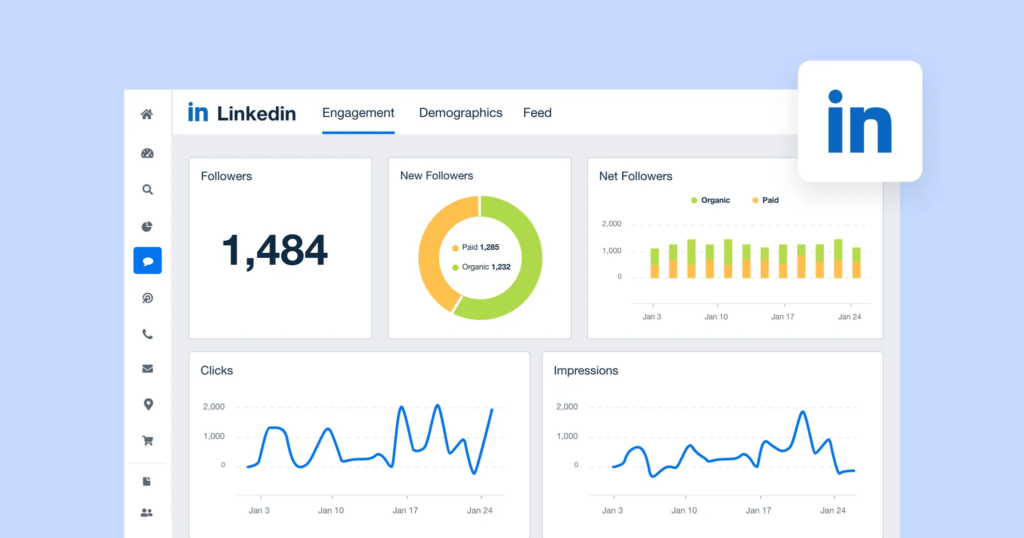
To refine your strategy, track key performance indicators (KPIs) that signal content effectiveness, like:
- Follower growth
- Engagement rate
- Impressions
- Clicks
- Conversions/leads
- Shares
- Comments
- Cost per lead
- Employee amplification
Analyze metrics by content type, audience, and other factors to glean insights on what’s resonating. Track both vanity metrics and hard business impact.
Optimizing Your LinkedIn Content Strategy
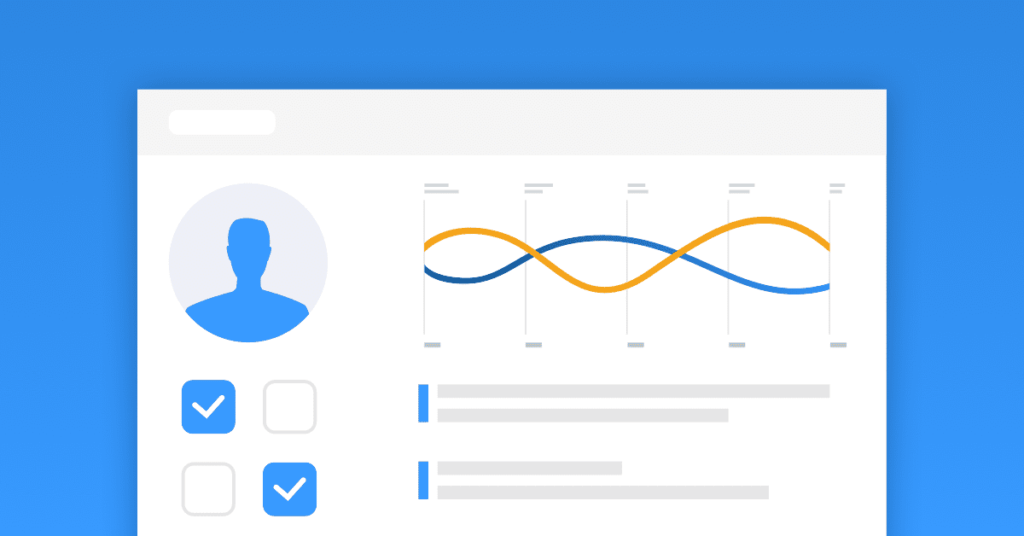
Consistently review performance trends and optimization opportunities:
- Analyze results – Which content exceeds KPIs? Which falls flat? Look at themes and reasons.
- Gather feedback – Survey audiences on what content types and topics they find valuable.
- Adapt to platform changes – Evolve strategy according to new LinkedIn capabilities and algorithm changes.
- Meet rising expectations – Increase quality standards as followers demand more sophisticated content.
- Find efficiencies – Look for ways to streamline and scale content development through technology like AI.
- Refresh ideas – Explore new angles, perspectives, and formats to keep content compelling.
The most effective strategies maintain their edge by continually optimizing according to data and audience needs.
Key Takeaways
- A documented LinkedIn content strategy creates focus, consistency, and impact.
- Align content to target audiences, goals, themes, formats, and metrics.
- Promote content across multiple channels to expand reach.
- Analyze performance metrics like engagement and follower growth to optimize efforts.
- Keep the strategy nimble by adapting to platform and audience changes.
Strategic LinkedIn content powers brands forward. Define your plan, systematize efforts around it, and keep enhancing it based on the data.
With a strategic foundation, your content and follower engagement will flourish on LinkedIn.

